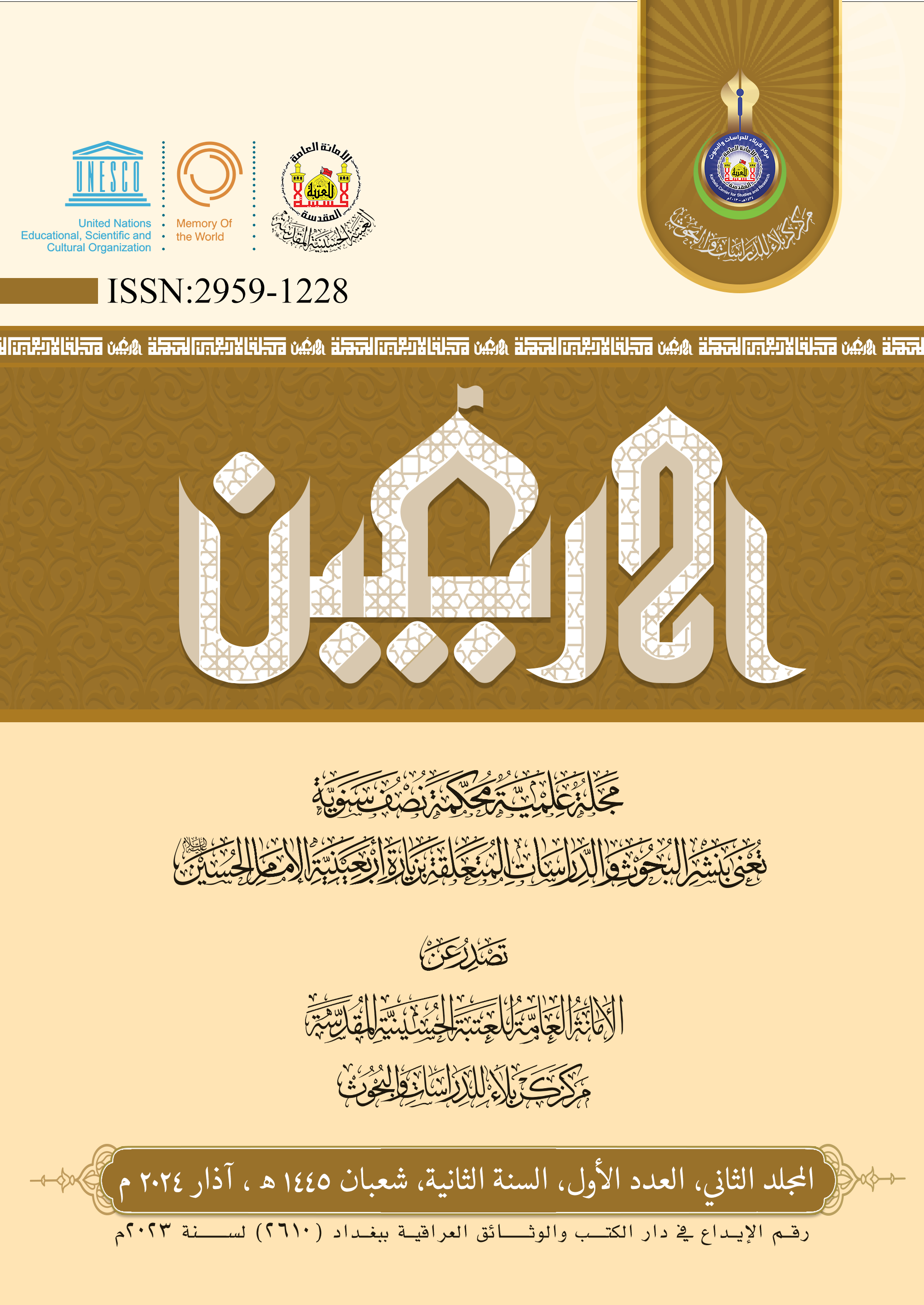Abstract
Ziyarat Al- Arba’een has become a global and million-person
visit, representing a significant and conscious social event. It
manifests people's love and loyalty to Imam Hussein (peace be
upon him), their profound connection to him, and their aweinspiring
attraction to his holy shrine. Despite facing challenging
circumstances and risks on the journey, especially from oppressive
governments that historically banned the visitation, subjecting it
to severe punishments like imprisonment, torture, amputation,
execution, and terrorism targeting Iraq in general and the specific
commemorations of the Ahl al-Bayt (peace be upon them), particularly the Arbaeen pilgrimage, the followers of the Ahl al-
Bayt in Iraq and around the world have proved their unwavering
loyalty and affection for the Prophet's family.
Through the ages, they persisted in commemorating the
eternal Arbaeen pilgrimage, affirming their commitment to this
sincere path of loyalty, which includes reviving the visitation of
Imam Sajjad, Lady Zainab (peace be upon them), and Jabir ibn
Abdullah al-Ansari to Imam Hussein (peace be upon him) on the
fortieth day of his martyrdom. The Arbaeen pilgrimage continued
uninterrupted across time and will persist by the will of Allah,
declaring their loyalty, devotion, and doctrinal love for Imam
Hussein (peace be upon him), and steadfastness on his revered
path in all circumstances.
The Ziyarat Al- Arba’een has evolved into a religious, doctrinal,
and loyal symbol and a significant social event celebrated every
year on the 20th of Safar. It serves as an important semiotic marker
that distinguishes the followers of the Ahl al-Bayt (peace be upon
them), encompassing various dimensions, including the religious,
doctrinal, social, psychological, and ethical aspects.
In this research, I will study and analyze these dimensions
comprehensively. Having personally experienced the atmosphere
of this grand, unique, and awe-inspiring pilgrimage since the 1990s
until today, and having walked on foot for consecutive years post-
2003, I have documented my observations and reflections on this
remarkable visitation, highlighting its numerous distinguishing
features from other pilgrimages.Note: The translation above is based on the context and themes
presented in the original text. The content is related to the religious
and cultural aspects of the Arbaeen pilgrimage, and it is essential
to approach it with respect and sensitivity to religious beliefs and
practices

